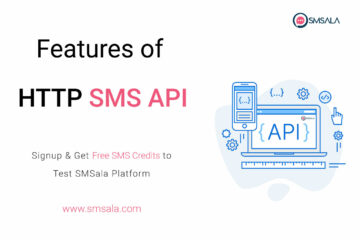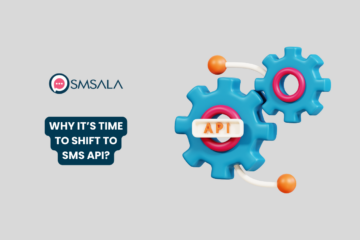
Customers notice quick replies. They value updates that arrive on time. They trust messages that feel personal. Businesses that send them earn loyalty. This is what SMS API Integration delivers. It links your systems to global mobile networks, so messages move fast and reach the right people every time.
What SMS API Integration Means
An SMS API is a simple bridge. It links your software with an SMS gateway. Once you type in the code, then your system begins to send and receive text messages without having to work manually. All the alert messages, confirmation messages and reminders all pass via the same link.
A store can confirm an order. A hospital can remind a patient. A bank can send a transaction code. The same API carries them all. The setup takes hours, not weeks. Many businesses use it because it works every time.
Why Businesses Use SMS API Integration
People read texts. They open them faster than emails. Messages reach phones within seconds. For a business, that speed means better contact and fewer missed chances.
SMS API Integration removes delay. Systems act the moment data changes. Upon a customer buying a product, he is issued with a text by a system which thanks him. There is a delay of a delivery and the client knows that instantly.
It builds trust. The customers would feel that the business cares about them to ensure that they are informed. The outcome is a continuous contact that is not compelled.
How SMS API Integration Works
The API is a sort of short code between your software and the telecom network. You put a message across in format. The gateway reads it, routes it, and pushes it to the right phone number.
Each message has a record. You can track delivery time and status. Reports show which texts failed and why. Developers check logs and fix issues fast. The system keeps running without breaks.
Real Use Cases
Retail: Order confirmations, shipping alerts, loyalty points.
Healthcare: Appointment reminders, test results, prescription notices.
Finance: OTPs, account updates, fraud warnings.
Education: Fee alerts, class schedules, exam notices.
Logistics: Route updates, driver contact, drop confirmations.
Every field finds a use. The objective remains the same to find customers at the appropriate time with the appropriate message.
SMSala: A Global Leader in SMS API Integration
Many providers exist, but few match reach and reliability. SMSala leads this field worldwide. It has SMS API that encompasses Asian, European, African, and Middle Eastern countries. The company builds direct carrier routes that keep delivery fast and stable.
Developers like SMSala for its clean API. It supports HTTP and REST formats. The dashboard shows real-time data and delivery charts. Businesses trust it for scale. Whether sending 1,000 or 10 million texts, the system holds firm.
SMSala’s clients range from small e-commerce firms to banks and airlines. Each one values the same thing: speed, clarity, and cost control.
How SMS API Integration Builds Engagement
Engagement grows from timely contact. Each text reminds the customer that the brand listens and responds. Messages confirm that the system works.
A quick example: a hotel guest books online. Seconds later, an SMS arrives confirming the stay. A day before check-in, another text shares directions. After checkout, the guest receives a thank-you note. No manual step, no missed message. The guest feels seen.
That sense of care builds repeat visits. A study by mobile data firm Mobilesquared found that personalized texts lift response rates by 45 percent. The same effect shows in loyalty numbers.
Key Benefits
Speed: The messages come out of the server and get phones within seconds.
Cost: You pay per SMS, no hidden charges or staff time wasted.
Reach: Works across networks and regions.
Automation: Systems trigger texts without human input.
Accuracy: Delivery reports show exact results.
Each point turns small actions into real contact. That is how SMS API Integration moves beyond software and becomes part of customer service.
Technical Fit
Developers find setup easy. The API key sits in your system. You send a POST request with the number and message. The provider returns a status code. That’s it.
Most APIs support JSON and XML formats. You can plug them into CRMs, payment gateways, or web stores. Logs stay online for 90 days or more, so teams track every text.
Scalability is built-in. One script can send one message or a million. Systems don’t slow. SMSala and similar providers offer 99.9 percent uptime.
Global Reach
SMS API Integration works anywhere phones exist. Businesses use it for local and global campaigns. A brand in London can text customers in Tokyo. An online shop in Dubai can confirm orders in Cairo.
Localization adds strength. A company using sms api turkey service by SMSala can send messages in Turkish and comply with local telecom rules. The API adapts language, sender ID, and timing to each market.
Compliance Rules
Text messaging runs under strict laws. Each country has its own. Customers must opt-in before receiving business messages. They must be able to stop them anytime.
Systems must store proof of consent. They must send only within legal hours. SMS API Integration handles most of this by default, but the business still controls content and timing.
Respect builds trust. Messages that inform, not annoy, keep customers loyal.
Personalization
Personal texts read like direct notes. The system pulls data from CRMs or order forms. It adds names, numbers, and dates.
“Hi Tom, your order #5123 is ready for pickup.” feels real. That small detail drives open rates. People trust what looks made for them.
Businesses track replies, run small tests, and adjust wording. The API records everything, so teams learn what tone works best.
Measurable Impact
Engagement shows in numbers. Open rates for SMS reach 98 percent. Response rates stay above 30 percent. Compare that with email’s 20 percent open and 2 percent click.
For support teams, SMS API Integration cuts call volumes. Customers get updates without calling. For marketing, it increases conversions from reminder texts. The effect compounds over time.
Companies that automate messaging see faster feedback loops. They react to demand quicker. The response of that drives sales, support and product planning.
Common Mistakes
Some brands send too many texts. Others send none after signup. Both lose contact.
Set clear triggers. Send one message for each event: signup, payment, shipment. Avoid daily pushes. Keep tone helpful.
Avoid long links or unknown short codes. Always add sender names people trust. Use a simple opt-out line like “Reply STOP.”
Setup Steps
- Pick a provider with direct carrier routes.
- Get an API key and login.
- Write a short script to send test messages.
- Review delivery reports.
- Connect to your CRM or website.
Within one day, your system can send live texts. Start small. Watch response. Then add more triggers.
Why SMS API Integration Lasts
Trends come and go, but texting stays. It works on any phone, old or new. It needs no app. It reaches people who skip emails.
Although chat apps are increasing, SMS does not lose its position. Banks, airlines and hospitals believe in it since it cannot fail. SMS API Integration makes that same reliability part of every system.
Businesses save time and build contact that feels personal. They don’t chase customers. They meet them where they already look—their phones.
How Developers Keep It Stable
APIs need upkeep. Logs must stay clean. Error codes must be checked. SMS gateways update routes often, so teams test daily.
Most providers give sandbox modes for trial runs. Developers use these to refine messages and timing. Once live, systems monitor every 24 hours.
When paired with strong support, SMS API Integration becomes almost self-running. SMSala and similar firms provide ticket desks that reply within minutes. That matters when your messages reach millions.
Future Trends
Rich Communication Services (RCS) is coming. It adds images and buttons to SMS. APIs will adapt to it soon.
AI will write message drafts. Systems will predict the best time to send. Yet the base remains the same: a simple text between brand and customer.
Even with new tools, the rule stands—clarity first. A short message sent on time keeps its power.
True Example
A courier company in India faced delivery delays during holidays. Customers flooded support lines. They added SMS API Integration through SMSala.
Now, each delivery step triggers an SMS. Drivers send updates through phones linked to the API. Complaints dropped by 60 percent. Customer ratings rose.
The change needed one week of work. The system still runs years later without new cost.
Tips for Long-Term Use
Limit messages to less than 160 characters. Write in the language of the customer. Avoid slang. Check local time zones.
Review performance monthly. Remove inactive numbers. Keep templates fresh. Only add new triggers when data supports them.
Take every message as a member of a conversation. In the long run, such voice becomes your brand.
Questions People Ask
What is SMS API Integration used for?
It automates text messages from systems to phones. It can be used by businesses as alerts, confirmations and promotions.
Does it need coding?
Yes, but basic. Developers use REST or HTTP requests. Most tasks take fewer than 50 lines of code.
Can I track delivery?
Every API call returns a status. Reports show success, failure, or pending.
Is it safe?
Good providers encrypt data and verify each request. Choose one with SSL and token access.
Does it work worldwide?
Yes. APIs connect to carrier networks in each country. Messages deliver anywhere.
Can it handle bulk SMS?
Yes. Systems queue messages and send them in order. Speed depends on route quality.
How does pricing work?
You pay per message or per route. Some plans offer discounts for volume.
Can I personalize texts?
Yes. The API merges data from your CRM into templates.
How do I pick a provider?
Check coverage, speed, uptime, and support. SMSala ranks high in each.
What results can I expect?
Faster contact, better engagement, and lower support load. Most firms see gains within one month.
Final Thoughts
Every message counts. Fast replies build trust. SMS API Integration makes that speed part of daily business. It keeps contact simple and human.
SMSala leads this field with strong routes and clear tools. Its clients stay connected from one platform to every phone.
A good text does more than inform. It reminds people that the brand behind it cares enough to stay close. That is the true goal of communication.



